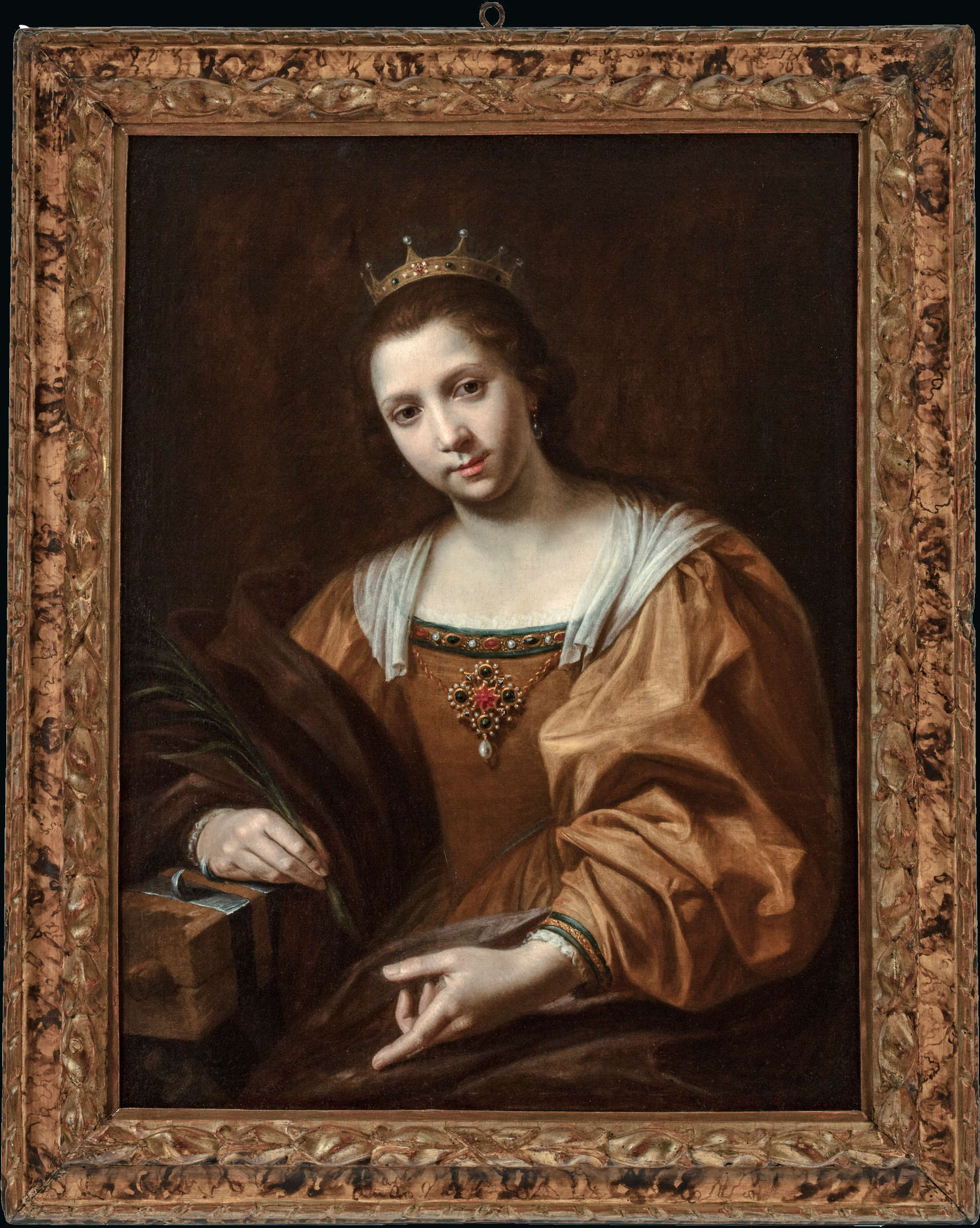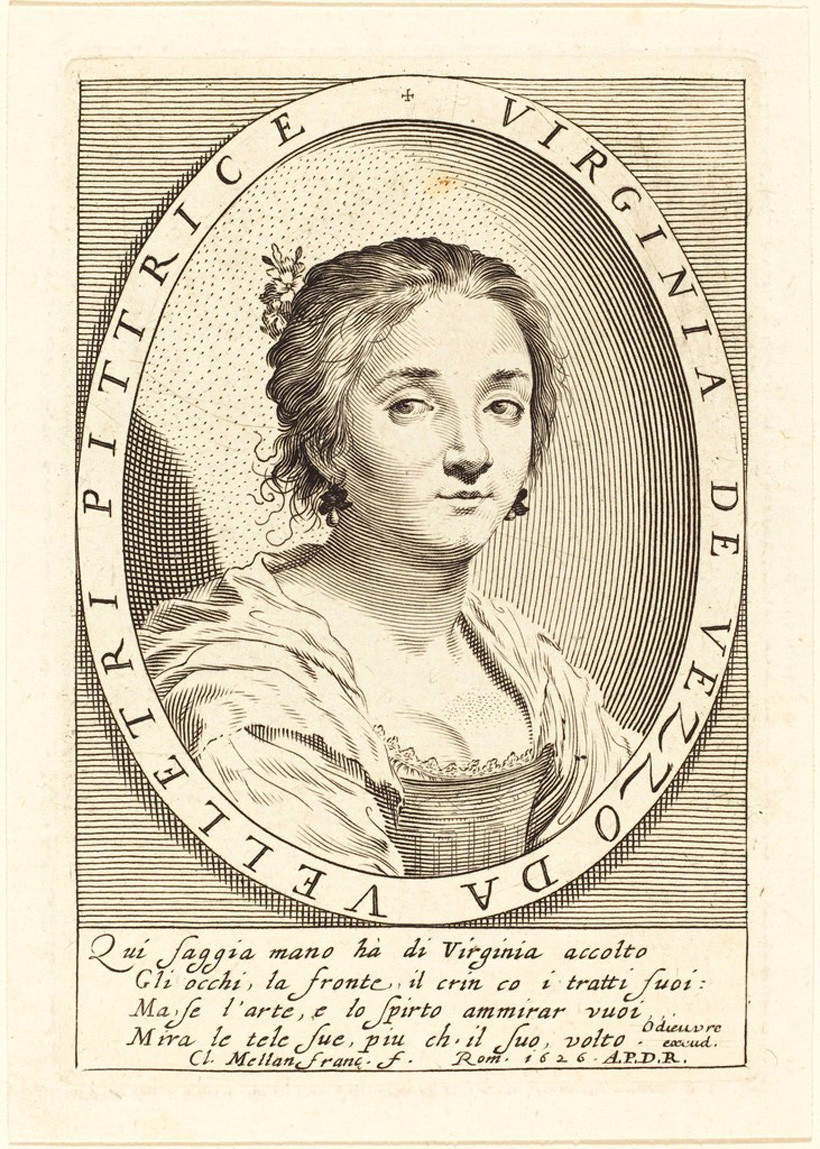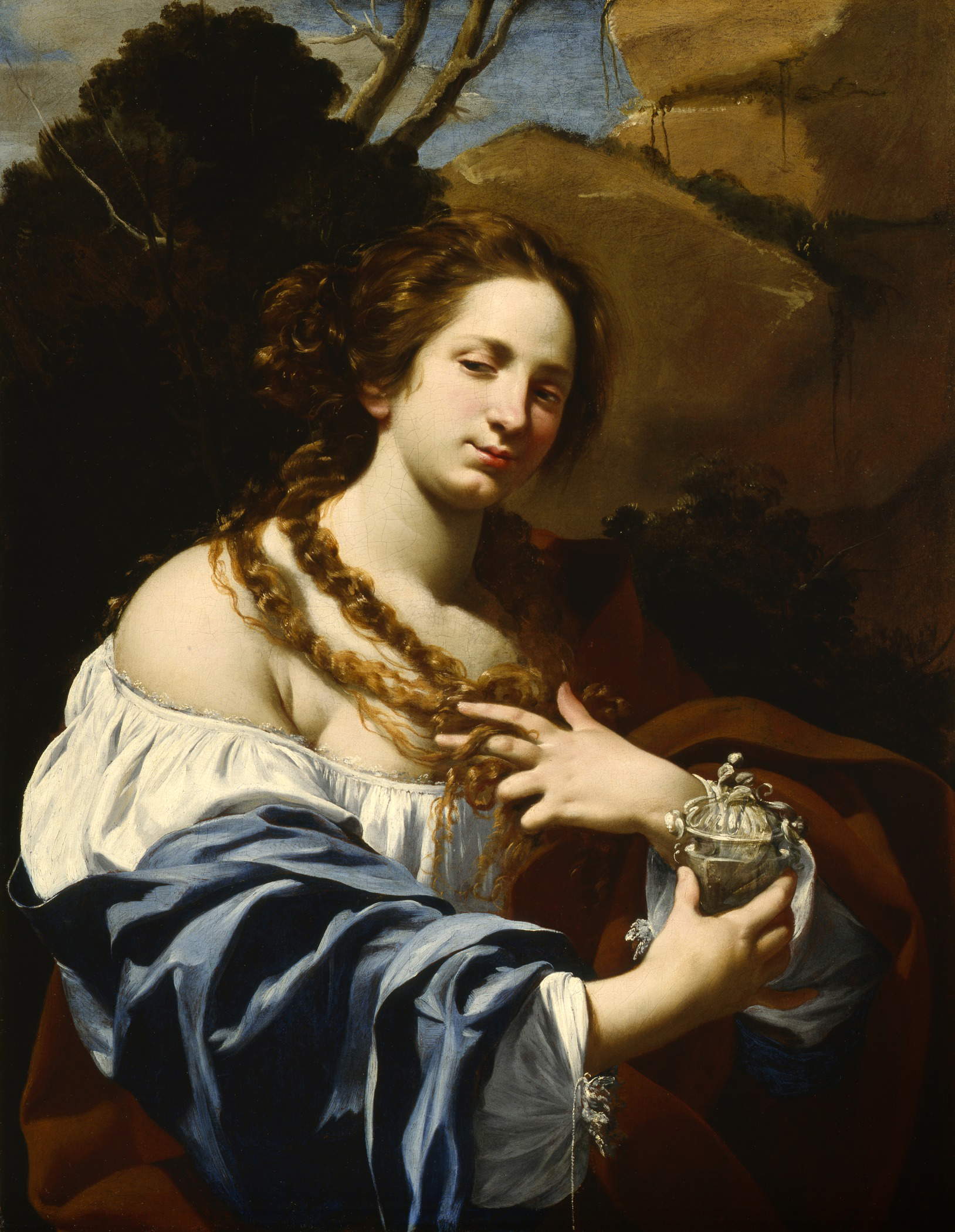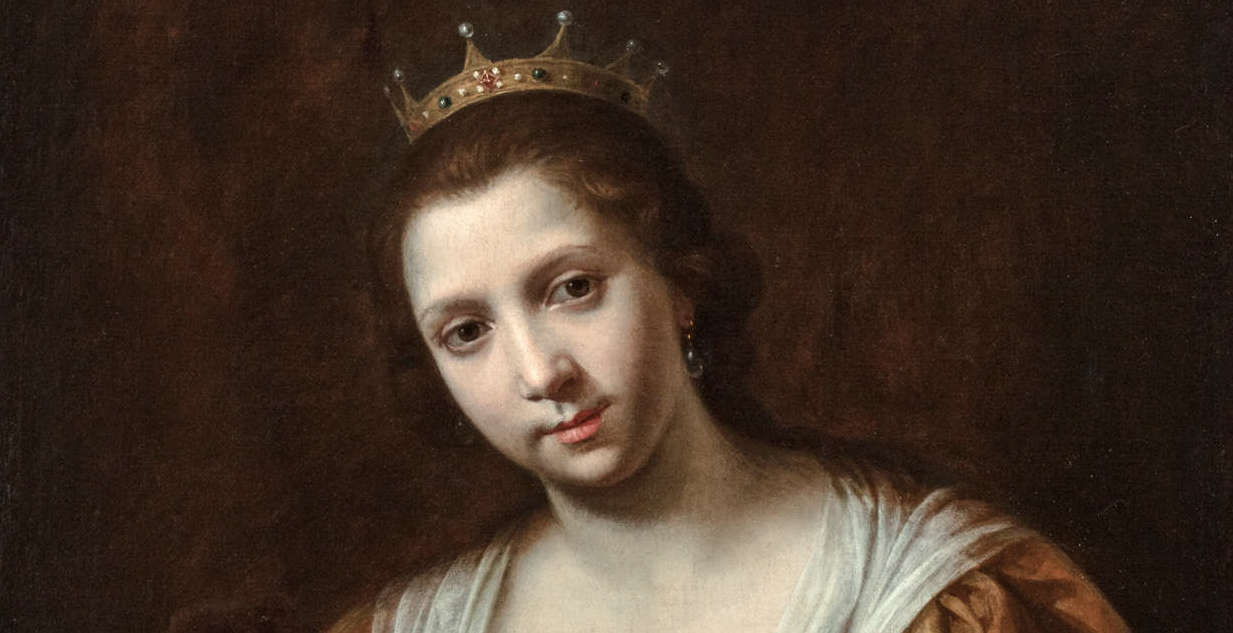Important achievement for LACMA - Los Angeles County Museum of Art, one of the most relevant U.S. art museums: the California institution has in fact found and purchased a very rare painting by Virginia Vezzi (Velletri, 1600 - Paris, 1638), a talented seventeenth-century artist, also known as Virginia da Vezzo. It is an important Self-Portrait as Saint Catherine of Alexandria, brought back to the market by U.S. antiquarian Robert Simon , who got it from a private Italian collector and sold it to the Los Angeles museum.

Virginia Vezzi’s name is still little known, even among aficionados, because despite her success as a painter in Rome and Paris, her reputation was ignored by contemporary chroniclers and was therefore lost to art historians in later centuries. Only recently have the biographical details of her life and, with them, her artistic achievements been discovered: the Italian public was able to see one of her works at the Le signore dell’arte exhibition held in Milan in 2021. Born in Velletri, a town southeast of Rome, Virginia was the daughter of Pompeo Vezzi, a painter who was also her first teacher (although later her style developed quite independently of her father’s manner, which was uncommon for an artist of the time). His talent was recognized early and is often cited as the reason for his family’s move to Rome in 1611. She soon entered the workshop of French painter Simon Vouet and in 1624 was admitted to the newly founded Accademia di San Luca in Rome, an honor accorded only to a small number of female artists at the time. Her closeness to Vouet eventually turned into a love sealed by marriage: the two painters moved to Paris in the late 1620s, after Vouet was appointed premier peintre du roi, or court painter to King Louis XIII. Vezzi continued to paint and teach at the Louvre, where the couple and their four children were frequent guests, but little documentary evidence about her remains from this period. Once in France, she devoted herself mainly to teaching: she taught courses for young women painters at the Louvre. Virginia Vezzi died prematurely, aged only thirty-eight, in 1638.
Vezzi scholar Consuelo Lollobrigida, who authenticated this painting, considers it Virginia Vezzi’s “Roman masterpiece” and dates it around 1624-26, in the years after Vezzi entered the Roman Academy. At that time, many painters in Rome were fascinated by Caravaggio, with his intense light effects and dramatic compositions. Vezzi also took his first artistic steps in that sphere, but he then moved, albeit slowly, toward developing his own, more personal style. His skill with the brush is evident in this Self-Portrait as St. Catherine of Alexandria, especially in the translucent white drape that rests on the saint’s shoulders, in the sparkle of the jewels on her neckline, and in the fluttering of her golden gown, the sleeve of which is depicted with an almost sculptural rendering thanks to a careful and dramatic play of light and shadow. This understated depiction of the saint, taken from the artist’s own face, embraces the tradition of women painters who used their own features in depictions of powerful mythological and biblical women.


Saint Catherine of Alexandria is depicted with her traditional attributes: the crown on her head, the palm of martyrdom, and the broken wheel of her torture on which her right arm rests. The saint is depicted half-length and seated in a dark space that serves both to isolate and highlight the subject. She is bathed in an intense light that illuminates her ebony skin, golden robe, and prominent pendant and jewelry along her neckline.
In addition to serving as a model for her husband, Vezzi’s image often appeared in her works. Comparison with an engraved portrait of Vezzi by Claude Mellan confirms that the figure of St. Catherine is a self-portrait, particularly in the shape of her nose and lips, as well as in the striking pearl earrings. The idealized beauty of the saint and her direct presentation, that is, untethered from any specific context and with a particular expressiveness in her gaze as she interacts directly with the viewer, similarly indicate that the work portrays a specific person. As a self-portrait, this painting follows the tradition of women artists portraying themselves in the guise of strong and powerful women, including saints. This is exactly what Artemisia Gentileschi, among others, did, with whom Virginia Vezzi struck up a friendship in Rome in the 1720s.
The painting will be published in the forthcoming monograph on the artist, written by Consuelo Lollobrigida. For LACMA, the painting also has a very special significance, because the museum also owns a painting by Simon Vouet that depicts his wife Virginia in the guise of Mary Magdalene: in fact, the painter posed as a model for this work around 1627. The couple, then, was finally reunited.
 |
| Major acquisition by the Los Angeles Museum of Art: here is the self-portrait of Virginia Vezzi |
Warning: the translation into English of the original Italian article was created using automatic tools. We undertake to review all articles, but we do not guarantee the total absence of inaccuracies in the translation due to the program. You can find the original by clicking on the ITA button. If you find any mistake,please contact us.